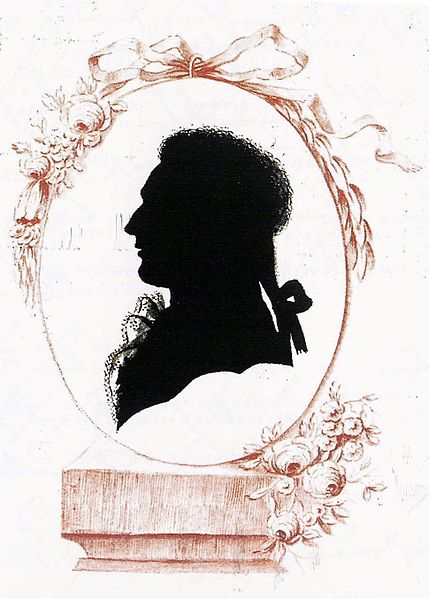A physiognotrace is an instrument, designed to trace a person's physiognomy to make semi-automated portrait aquatints. Invented in France in 1783–1784, it was popular for some decades. The sitter climbed into a wooden frame, sat and turned to the side to pose. A pantograph connected to a pencil produced within a few minutes a "grand trait", a contour line on a piece of paper. With the help of a second scaling-down pantograph, the basic features of the portrait were transferred from the sheet in the form of dotted lines to a copper plate, which had previously been prepared with a ground for etching. One week later, the sitter received an etched plate and twelve little prints. The device but also the aquatint prints are called physionotraces.
Pierre Gaveaux, 1821, by Edme Quenedey (1756–1830) after a physiognotrace
Quenedey's drawing of the tool
Raphaelle Peale's physiognotrace
A silhouette is the image of a person, animal, object or scene represented as a solid shape of a single colour, usually black, with its edges matching the outline of the subject. The interior of a silhouette is featureless, and the silhouette is usually presented on a light background, usually white, or none at all. The silhouette differs from an outline, which depicts the edge of an object in a linear form, while a silhouette appears as a solid shape. Silhouette images may be created in any visual artistic medium, but were first used to describe pieces of cut paper, which were then stuck to a backing in a contrasting colour, and often framed.
A traditional silhouette portrait of the late 18th century
Goethe facing a grave monument, cut paper, 1780
Corinthian black-figure pyxis, 6th century BCE
Attic Greek black-figure Panathenaic prize amphora attributed to the Euphiletos Painter, ca. 530 BCE







